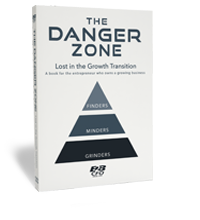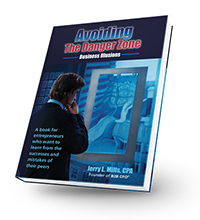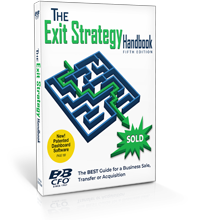There are numerous options for the entrepreneur who decides it’s “time to move on”
|
by Amy R. Handler, In Business Magazine August 2014
|
Are there any true positives that can come from selling a business? Yes, say three experts who have experience making cash-outs and exit strategies both happy and lucrative events.
There are various reasons an entrepreneurial owner may decide to sell a successful and profitable company, says Orville (Chip) Fisher, an attorney, investment banker and managing director at the private investment-banking firm Greene Holcomb & Fisher in Phoenix. “These reasons may include old age and health, or the desire for a new owner to take a company to the next level. Another reason might be that the owner wants to take some money out of the company and diversify,” he says.
In many cases, the seller wants to start a new business, but it is seldom in the same field as the business he or she just exited because buyers usually ask sellers to sign a non-compete clause lasting at minimum five years, points out Jerry Mills, founder of B2B CFO, which provides CFOs to companies on an outsource basis. However, having sold their company at a profit, sellers may go on to continuously purchase and sell new companies in varying fields; there are many successful businesspeople who have thus earned the nickname “serial entrepreneur.”
It may be time to cash-out a company when that company has exceeded all expectations and the entrepreneur, investors and employees have all secured financial success, turning the company over to a new entrepreneur and investment group to grow the business further.
However, according to Fisher, the primary reason a company shuts down is because it fails to make money. In this situation, the company can file for bankruptcy or the business can liquidate and sell everything.
But ailing companies can be helped with the right management team at the helm. “I’m dealing with a business right now where the entrepreneur has taken the business with a great brand name to its limit, and it’s [now] ceased to be profitable. The reason is because the business doesn’t have the right management and is now overextended. The managers don’t have the skills or capabilities to make the business profitable. The entrepreneur could see that the person running the business is in over her head,” Fisher says. New management of experienced professionals may find growth opportunities and turn things around, or may have to make tough cost-cutting decisions the founding entrepreneur would likely find difficult. “The way this can happen [in this business] is that the manager must step back and accept the fact that she’s more skilled in sales and marketing as opposed to operations, and must give the reigns to someone else,” Fisher elaborates.
Part of the selling process is identifying the type of buyer who would be interested in the company and acceptable to the seller. Says Mills, “Some owners might want to sell to a private equity group, some might want to do an Employee Stock Ownership Plan (ESOP), some might want to do a management buyout or family transfer.”
Selling to a private equity group (PEG) could net the business owner a much greater profit, but the owner will give up majority interest and/or complete control during the process the PEG is an investor in the business. The PEG’s role is to improve the company and to sell it for a much higher price than it was worth when the PEG invested. The owner might be able to earn more money when the company is sold. Says Mills, “The major issue is losing control while the PEG is the investor.”
For the ESOP option, “the company has to be ‘bankable,’ meaning that it has to be able to borrow a lot of money from a bank,” Mills says, explaining that a trustee will form the ESOP and the ESOP will use the company to borrow the money to buy out the owner(s). This often involves millions of dollars for the transaction and the company must be able to borrow money and repay the loan.
A management buyout or family transfer usually yields the lowest amount of money for the owner for a business sale and also carries the greatest risk, Mills observes. “Additionally, management and/or family members do not have money, and this means the owner has to sell the business with a carry-back note. This note is usually paid over many years.” The downside to this is the owner must rely upon management and/or family members to run the business prudently so it can earn enough money to pay back the note.
There may be buyers interested in the company for strategic reasons, says Phillip Guttilla, a certified public accountant, chartered financial analyst and attorney who heads the Corporate group at Phoenix law firm Polsinelli. These are companies in similar industries or in vertical industries that might see what a troubled company has built up as a positive that can fit into what the acquiring company has built up. “The strategic acquirer might acquire the troubled company to cut expenses and increase revenue with a positive cash flow,” Guttilla explains.
Once the company is readied, it can close the deal with the buyer of choice. But Mills notes it is important to first fix whatever may be wrong, even if it means delaying the process of bringing in a buyer. “We don’t want to scare away a buyer, and if we can fix the problem, then we can potentially sell the company for more money.”
“When I help people start companies, I always counsel them to have an exit plan,” Guttilla says, noting this holds true for purchasing a company as well. “As the late businessman and author Dr. Stephen R. Covey writes in The Seven Habits of Highly Effective People, you start with the end in mind. Any business owner starting out should have a sense of what the plan is. Will the company go public, or should it be packaged attractively for purchase should a bigger player come along? In many venture capital funds, there are time horizons. Most funds have a 10-year life span. Funds are established to get to an exit — that 10-year mark,” Guttilla explains.



